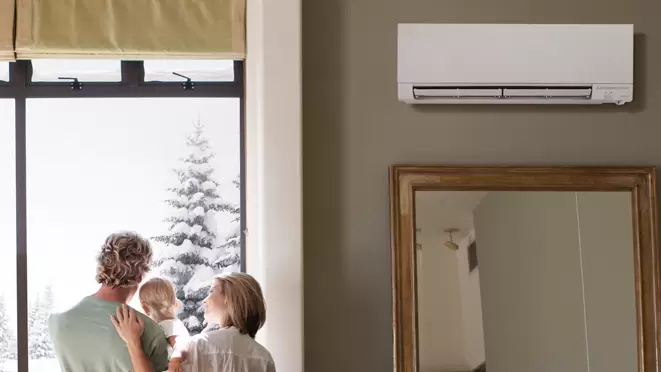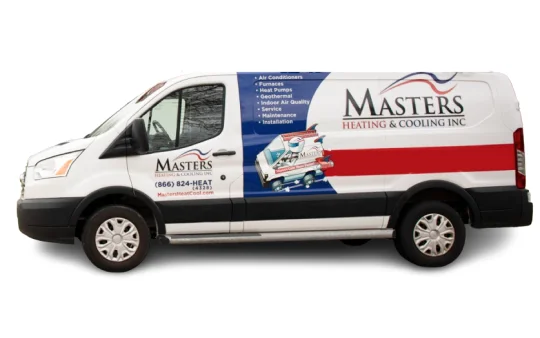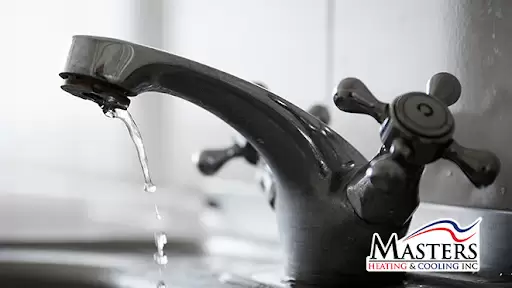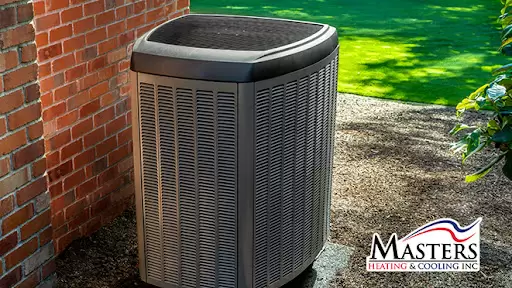How Efficient Are Ductless Mini-Split Systems?

Ductless mini split heating and cooling systems are not new, but they are certainly not as widespread as central HVAC systems or heat pumps. That does not mean that they can’t be a viable alternative to the more traditional heating and cooling equipment. Ductless mini split systems have several advantages which may make them attractive, including their efficiency compared to the others. But just how efficient are they?
Mini Split
First, let’s take a quick look at what characterizes a mini split system. Like a traditional central air system, they have two main components: an outdoor compressor and an indoor air handler. They are generally connected via a three-inch hole in an exterior wall. This allows for connection of the power cables, copper tubing and a condensation drain line. The main feature, of course, is that they do not require ductwork; air is delivered to individual rooms via separate air handlers.
Efficiency Features
Mini splits systems can provide improved efficiency over traditional HVAC systems because of a few basic differences.
- No ductwork, no air loss. Traditional ductwork will eventually develop leaks and cracks, which means lost air and wasted energy.
- Higher SEER rating. Systems are rated by their Seasonal Energy Efficiency Ratio (SEER); the higher the rating the more efficiently they operate. Minimum SEER requirements in most states for traditional heating/cooling systems is 13-14, while the minimum for mini splits is 15. Energy Star models come with SEER ratings between 20-25, and some high-end models feature SEER ratings of 35 or more.
- Zoning features. Mini split systems can be set up to climate control more than one room at once. In fact, some systems can be installed with one outdoor unit that is connected to up to nine indoor air handlers. This allows convenient zoning options, which means that not all rooms need to be heated at the same time.
- Improved indoor air quality. Mini split systems usually help improve indoor air quality because they do not have duct work, which circulates airborne pollutants and allergens throughout a home. These systems come with built in humidifiers and special filters which help reduce these contaminants. Good indoor air quality means your system will have to work less, conserving energy when possible.
Good Fits For Mini-splits
Mini split systems are ideally suited for new home constructions and for whole home revisions or additions where there is no ductwork or installing ductwork is not feasible. They are also viable options for retrofits to replace non-ducted heating systems, including hydronic/radiant heating or space heaters that operate on fuels (wood/kerosene, etc.). Call Masters today to learn all about whether or not mini splits are a good option for your home. And don’t forget to check us out on social media !
Request Service

Why Choose Masters Heating & Cooling?
Northeast Indiana's HVAC & Plumbing Experts
- Licensed, insured & NATE-certified technicians
- Carrier Customer Specialist with experience servicing all brands
- Free estimates on replacement quotes
- Upfront pricing & financing options
- Background-checked technicians
- Military, veteran & senior discounts
- Serving Fort Wayne, Decatur, Greenwood & Indianapolis



